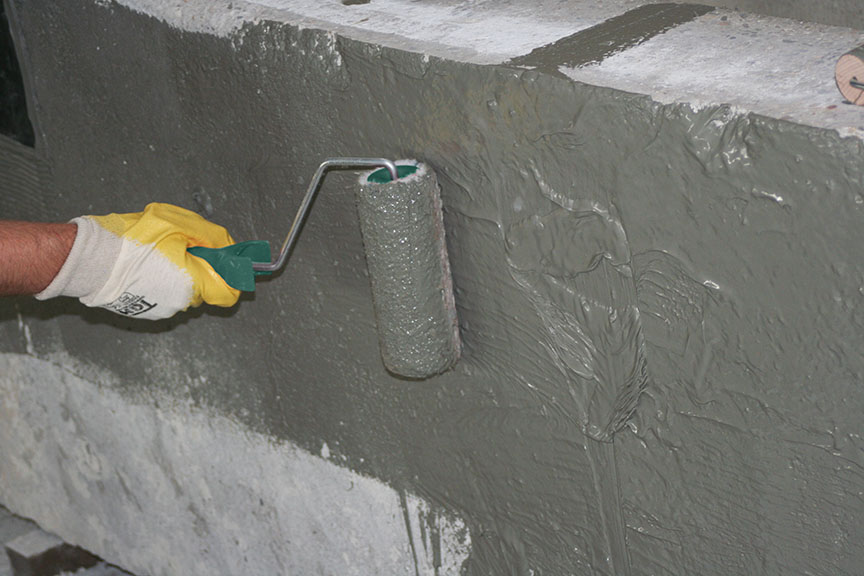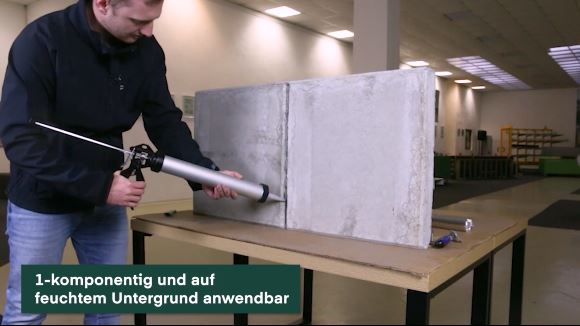Creating damage-free outdoor facilities by sealing the terrace
Terraces, as garden terraces or even roof terraces, are permanently exposed to the weather and – depending on their construction, location and use – have to bear various loads. For long-lasting freedom from defects, it is important to seal the terrace in such a way that moisture cannot penetrate the structure and cause damage to the substance. There are different variants of terrace waterproofing; in any case, good planning, professional execution and the use of high-quality sealing materials are important.
BT waterproofing products are excellent for this purpose:
- Waterproof small and large patio areas,
- to close joints and cracks subsequently and permanently and
- Combining the sealing of joints and surfaces in a few simple steps
This makes terrace sealing absolutely safe and quick to realise.

BT – Waterproofing products for your terrace
LiquidElast® – Your professional for terrace sealing
Effective sealing is the quick and inexpensive solution against moisture. LiquidElast® from BT innovation is a universally applicable, pressurized waterproofing system that reliably seals building materials. By simple application, LiquidElast® (type S+V) hardens after surface application to form a soft elastic rubber-like membrane that effectively protects the substrate from penetrating moisture. LiquidElast® can also be used to seal joints. Through-curing of surface coatings takes place within 24 hours at room temperature, final strength after a few days.
Instructions - Processing as surface sealing

LiquidElast® – Advantages
- Pressure waterproof up to 1,0 bar
- Wear resistant and resistant to many chemicals
- Applicable on damp substrates from 0°C
- Crack-bridging up to 5 mm
- Permanently elastic
InnoElast® – Effective sealing and filling of joints
When building a terrace, connection and expansion joints occur between the materials. These can be effectively closed with InnoElast®. This prevents moisture from entering the terrace. Even when used on windows and doors – the InnoElast® system is absolutely reliable and can be used by anyone. The sealant has an extremely high adhesion and can therefore be used on almost all substrates indoors and outdoors. Due to its special composition, InnoElast® is a low-shrinkage, permanently elastic and weather-resistant sealant.
Application: InnoElast® is applied to a clean substrate, which must be free of dust, grease and oil. InnoElast® is filled on this by means of a tubular bag gun and then cures effectively. Curing is 2-3 mm per 24 h, at a room temperature of 23°C and humidity of 50%. The skin formation time is 2-3 hours for InnoElast® Type 1 and 15 minutes for InnoElast® Type 2 under the same conditions.
Instructions - Processing as a joint sealant

InnoElast® – Advantages:
- Durable and impermeable waterproofing
- Application also on damp surfaces
- Very high adhesion to numerous building materials
- Solvent-free and environmentally friendly
ProElast® – The two-component solution for permanently sealing joints and butt joints
Good terrace waterproofing is indispensable. In the case of exposed masonry, subsequent exterior sealing of joints and butt joints can be carried out using the ProElast® system from B.T. innovation. Consisting of resistant EPDM film and the extremely adhesive InnoElast® surface adhesive, it provides a durable and extremely strong bond. The ProElast® system is characterized by unlimited waterproofing, high weather resistance and simple processing.
Application: After applying InnoElast® adhesive to a clean substrate, spread with a notched trowel. The sealing film is then glued centrally over the joint so that no air bubbles remain. The edges are then sealed with InnoElast® type 1. Short curing times enable fast further work. The skin formation time is 2-3 hours for InnoElast® Type 1 and 15 minutes for InnoElast® Type 2 at a room temperature of 23°C and a humidity of 50%. Within 24 hours, a layer thickness of 2 to 3 mm, at a room temperature of 23°C and humidity of 50%, cures effectively. In this way, you reliably seal construction joints, predetermined crack cross-sections and movement joints.
Instructions - Processing as surface sealing
ProElast® system – Advantages:
- Pressure waterproof up to 2 bar
- Application on damp surfaces or ice-free subsoil from -3°C
- Weather and UV resistant
- InnoElast type 2 = high chemical resistance
- Applicable without primer
DIN standard 18 195 “Waterproofing of buildings” regulates how buildings or individual components, such as terraces or balconies, can be protected against moisture. Depending on the stress on the structure with one of the load cases pressing water or non-pressing water, different requirements are placed on the waterproofing of the terrace as well as the material used. With regard to planning and execution, the following principles should be observed, among others:
- A slope must be built up so that effective drainage of the terrace is possible. This can be created in the construction as well as by the covering.
- The water that accumulates on the sealing layer, for example from precipitation, must not be allowed to stand; hydrostatic pressure must be avoided.
- Joints and connection points in the waterproofing layer are particularly sensitive to moisture.
- At penetrations or connections, careful and professional execution of the seal is particularly important.
- If the terrace is covered with tiles or slabs, then according to the ZDB leaflet, a slope of 1 to 2 % is required for the wear layer.
Classic and proven solutions for waterproofing roof or garden terraces can be realised on the one hand by laying waterproofing membranes in a joint-tight manner and on the other hand by applying a coating over the entire surface. If a tile covering is chosen as the wear layer, then composite waterproofing is also an option. In this case, the tiles or slabs are laid directly into the permanently elastic waterproofing. The materials used are bitumen or polymer bitumen sheeting and coatings such as LiquidElast® S, V or P. For surface or composite waterproofing, plastic sealants and elastomers such as the LiquidElast® systems, bitumen thick coatings or asphalt mastics are also suitable. Significant differences can be found above all in the service life of the sealing products.
With all variants, it is important to pay attention to connections, expansion joints, penetrations and other sensitive areas. As a rule, waterproofing is carried out up to 300 mm above the terrain. In the case of terraces as well as balconies, this is often not possible due to the existing construction situation, for example in the door area. Then canopies or covered gutters can prevent moisture from penetrating or running behind the waterproofing.
Whether it is a new building or a terrace renovation – the material used has a decisive influence on the success of the construction project. The Elast waterproofing systems from B.T. Innovation are equally suitable and approved for both moderately and highly stressed surfaces. Depending on the construction, it can be used for in-situ concrete terraces as well as for prefabricated reinforced concrete elements or in the field of renovation. For composite waterproofing on the terrace, LiquidElast® is suitable as a brushable and groutable waterproofing system; RubberElast® can be used particularly effectively for waterproofing precast joints and even reliably seals against pressing water.
Due to its simple handling and long-lasting effect, terrace waterproofing can be extremely economical. This applies to the production of the waterproofing by the specialist company as well as to the implementation by the do-it-yourselfer.